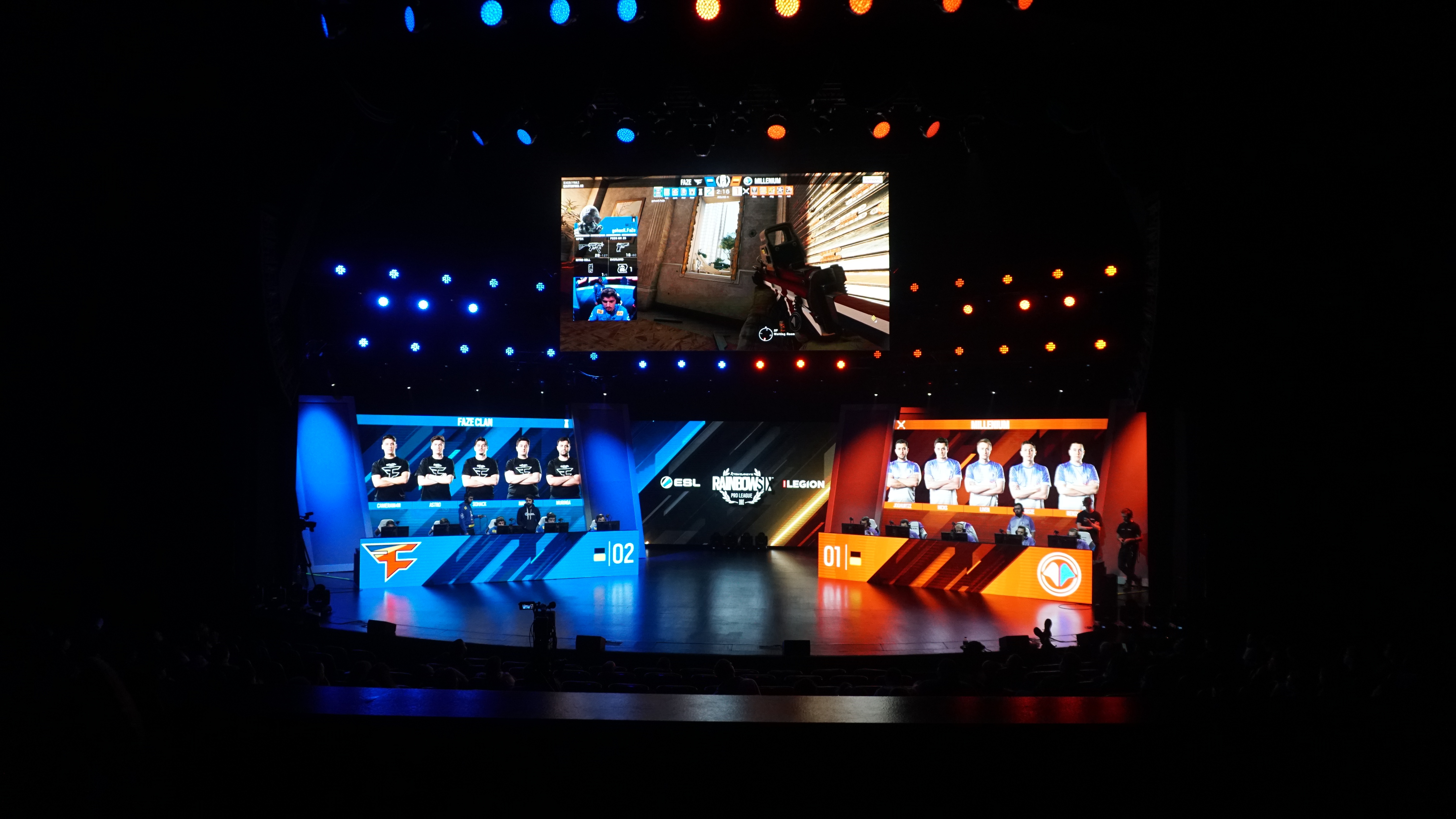How universities are showing off their newest sport
In what has become the biggest viewer spectacle in recent time, competitive gaming or esports has arrived on the big screen and is attracting unprecedented viewers. Contrary to the trajectory most were expecting, you can now get a college scholarship for how many kills you get on a video game, and fill arenas while doing it. Sixty universities around the country have already jumped into the competition, and are preparing for a fall season. Here’s what established collegiate esports teams are doing to host their teams and all the onlookers.

GOOD
It should be noted that schools don’t have to play in an arena packed with seats to be watched. In fact, most of the viewers that watch big esports competitions are tuning in on Twitch or YouTube. In this case, a lower budget may mean playing in an advanced computer lab and broadcasting to online audiences. Then, if a college did want to host a tournament and create awareness and support in their city, they could collaborate with a local movie theater. Theaters accrue between 70-75% of their revenue on the weekends, and could be open to hosting esports events earlier in the week. If a couple colleges do this well, we may start seeing more theaters that carry compliance for gaming as well as film.
There’s a way to get any up and coming collegiate esports team up and running. With just a small budget, you can transform a computer lab at a college into a start-up facility for the esports team. Further down the road, as bigger budgets come in for an esports program, colleges can lease theaters, or begin to construct arenas of their own. If gaming has proven anything, it’s that all you need to be watched is to be good. Esports provides for an easy start-up, and, in light of its success outside the competitive collegiate scene, should have no problem gaining onlookers.
BETTER
The University of California at Irvine boasts the greatest collegiate esports facility in the country. It sits in the center of the campus, and is open to all students and staff. Gaming is a big hit on the campus, not just because of the esports team, but because of how many of the students just enjoy to game for fun. The university overbuilt the facility to allocate space for students and staff. The common area is like a gaming computer lab, and the school charges rates per hour for the student body to game. All of this is for the students that aren’t on the team. If you’re good enough to make it on the team, the rest of the facility is opened up to you. That includes state of the art gaming PC’s, community and social settings, and seating for some of the student body to tune in to small matches. As for big arenas that seat thousands, these colleges are traveling to third-party arenas when they play in big events. UCI’s arena, is the first of its kind on a US college campus, and allows for the flourishing of not only the esports team, but the entire student body.

BEST
While UCI has put together an impressive facility for esports, it isn’t exactly spectator friendly. The facility is more like a computer lab than it is an arena. Harrisburg University on the other hand is working with the best of both worlds. They have a small facility for their team to play, and are using the Whitaker Center of Art and Science down the street when they have competitions. The center has put the HU team up in their best theater, with 400 seats facing a high definition 40-foot screen. HU will now have a place at home to play “home games”, and a comfortable spot on campus to practice.
So now no matter where you start, the point is that you start. Venues are well aware of esports presence in global culture and what it would mean for their revenue. Whether you’re just getting started in a computer lab, or renting out a theater down the street, there are options for any team to get up and running.
Point blank–if you play it, they will come.




Let Us Know What You Thought about this Post.
Put your Comment Below.